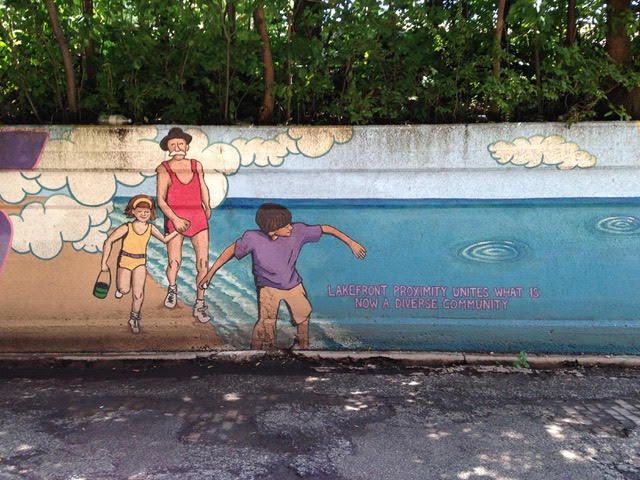Ethnic and racial diversity is transforming America’s urban landscape by contributing to the growth of multiethnic neighborhoods.1,2 Some view these neighborhoods as presumably holding the promise of improved race relations. However, others argue ethnoracial diversity reduces interpersonal trust and leads people to withdraw from collective life.3 What do diverse neighborhoods tell us about the prospects ofracial integration and equality in America?
What Do Diverse Neighborhoods Tell Us about Race and Inequality in America?

Key Findings
- Integrated neighborhoods were originally seen as an alternative to segregated neighborhoods and as a strategy for equality and opportunity.
- Integration is multidimensional; it involves more than just living together and interacting. Integration also happens at the symbolic and civic levels.
- A three-year ethnography of a Chicago neighborhood shows that racial minorities experience high spatial and symbolic integration but low levels of integration in civic organizations.

Why residential integration or diversity matters
Where you live has a profound influence on your opportunities and life chances. In the United States, residential stratification has been a major driver of racial inequality. Living in segregated neighborhoods is associated with a variety of negative outcomes.4,5 Integrated neighborhoods stand out as an alternative to segregation and as a strategy for equality and opportunity. The motivation for residential integration was that it would give non-whites access to higher quality neighborhoods and that it would promote contact across racial lines, which would benefit everyone.
Integration is multidimensional
Do diverse neighborhoods live up to their promise? The existing literature makes it clear that spatial proximity does not equal social proximity. However, integration involves more just living together and interacting. Integration has multiple dimensions—spatial, social, symbolic, and civic. Examining all of these dimensions gives us a more complete picture of the social system. For example, at the symbolic level, a neighborhood may appear to be inclusive by signaling that it is a diverse and welcoming place. To be integrated at the civic level, minority residents would have to have meaningful participation in local civic and political affairs. Civic integration is particularly important because it sheds light on whether minorities have power to effect change in their communities.
Studying diversity on-the-ground
To find out how diversity is experienced on the ground, I conducted an ethnography of Rogers Park, Chicago. This neighborhood has been racially and socioeconomically mixed for three decades.I spend three years conducting participant observation in public settings and community organizations. I also interviewed 103 residents who were involved and uninvolved in organizations. Based on my fieldwork, I found that there is peaceful coexistence among groups in public settings but that there is unequal civic participation. In this progressive neighborhood, civic organizations encourage minority involvement, yet middle-class, middle-aged whites are the most involved in community meetingsand various civic groups. While norms of politeness guide social interactions and contribute to maintaining integration in public spaces, achieving integration in the civic sphere requires overcoming socioeconomic, citizenship, and institutional barriers to participation, such as distrust in the government.
Conclusions
Thinking about the future of race relations in a diversifying America, the case of Rogers Park teaches us that integration means more than redefining a community as diverse; it means creating opportunities for people have a voice in their community.

References
- Fong, Eric and Kumiko Shibuya. 2005. “Multiethnic Cities in North America.” Annual Review of Sociology 31: 285-304.
- Logan, John R., and Charles Zhang. 2010. “Global Neighborhoods: New Pathways to Diversity and Separation.” American Journal of Sociology 115 (4): 1069–1109.
- Putnam, Robert D. “E Pluribus Unum: Diversity and Community in the Twenty-First Century. The 2006 Johan Skytte Prize Lecture.” Scandinavian Political Studies 30 (2): 137–74.
- Massey, Douglas S., and Nancy A. Denton. 1993. American Apartheid: Segregation and the Making of the Underclass. Cambridge, MA: Harvard University Press.
- Sharkey, Patrick. 2013. Stuck in Place: Urban Neighborhoods and the End of Progress toward Racial Equality. Chicago: University of Chicago Press.
Meet the Researcher
Denia Garcia is an Assistant Professor of Public Affairs, University of Wisconsin-Madison. She is a sociologist of race/ethnicity and neighborhoods. Denia was a postdoctoral fellow at Indiana University in the Department of Sociology and the Center for Research on Race and Ethnicity in Society. She completed a Ph.D. in Sociology at Princeton University in 2017.
This work is part of a book manuscript in progress titled The Promised Land? The Meaning of Integration in Diverse Neighborhoods.


